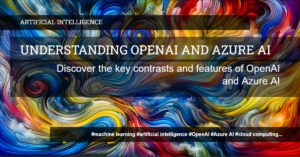Introduction
Artificial Intelligence (AI) has made significant advancements in the field of natural language processing (NLP). One of the notable developments is the introduction of chatbots powered by AI models like ChatGPT. However, even though AI-powered chatbots like Google Bard appear promising, they come with their fair share of challenges.
In this article, we will delve into the challenges associated with using ChatGPT for Google Bard and discuss their implications for NLP.
1. Biases in Generated Responses
One of the major challenges with AI-powered chatbots is the potential for biased or inappropriate responses. Despite efforts to train AI models on diverse datasets, biases can still creep in and affect the responses generated by ChatGPT. This can lead to misleading or discriminatory answers, potentially causing harm or distress to users.
It is crucial for developers to address this challenge by implementing robust methods to detect and mitigate biases in the responses generated by ChatGPT.
2. Lack of Understanding Context
Another challenge with ChatGPT-based chatbots is their limited ability to understand context. While they can generate plausible responses, they may not fully grasp the nuances of a conversation. This can result in irrelevant or inaccurate answers, undermining the effectiveness of the chatbot.
To mitigate this challenge, developers can adopt techniques such as reinforcement learning, contextual embeddings, or incorporating external knowledge bases to enhance the context understanding capabilities of ChatGPT.
3. Dealing with Ambiguity
Ambiguity is a common challenge in natural language understanding, and it also affects AI-powered chatbots. ChatGPT might struggle when faced with ambiguous queries or complex sentences, leading to inaccurate or confusing responses. This can frustrate users and prevent them from obtaining the desired information.
Developers can tackle this challenge by employing techniques like syntactic and semantic parsing, active learning, or leveraging additional contextual cues to disambiguate queries and generate accurate responses.
4. Ethical Considerations
The implementation of AI-powered chatbots like Google Bard raises ethical considerations. The ability of these chatbots to engage in human-like conversations brings up concerns regarding disclosure of their AI nature to users. Users should be made aware that they are interacting with an AI system, and transparency should be maintained to avoid any misuse of chatbot capabilities.
It is essential to address these ethical considerations, both from a design and deployment standpoint, to ensure responsible use of AI-powered chatbots.
Conclusion
While AI-powered chatbots like Google Bard offer exciting possibilities for conversational AI, they also come with several challenges. Biases in responses, limited context understanding, ambiguity handling, and ethical implications are some of the hurdles that developers must overcome to create truly effective and responsible AI chatbots.
By actively working towards mitigating these challenges, we can leverage the potential of ChatGPT and other AI models to create chatbots that provide accurate, unbiased, and contextual responses for various applications.

